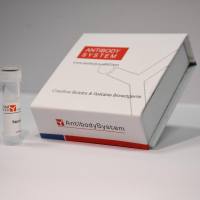In Vivo Detection of Oxidized Proteins: A Practical Approach to Tissue-Derived Mitochondria
互联网
互联网
相关产品推荐

Cxcl16,Srpsox/Cxcl16,Srpsox蛋白Recombinant Mouse C-X-C motif chemokine 16 protein (Cxcl16) (Active)重组蛋白Scavenger receptor for phosphatidylserine and oxidized low density lipoprotein, Small-inducible cytokine B16, Transmembrane chemokine CXCL16蛋白
¥852

InVivoMAb 抗小鼠 CD274/PD-L1/B7-H1 Antibody (10F.9G2),InVivo体内功能抗体(In Vivo)
¥2700

Coagulation Factor III / Tissue Factor / CD142 鼠单抗 (FITC)
¥700

Recombinant-Drosophila-melanogaster-CAAX-prenyl-protease-2SrasCAAX prenyl protease 2 EC= 3.4.22.- Alternative name(s): Farnesylated proteins-converting enzyme 2; FACE-2 Prenyl protein-specific endoprotease 2 Protein severas
¥11466

甲壳素,1398-61-4,practical grade,阿拉丁
¥37.90
相关问答

